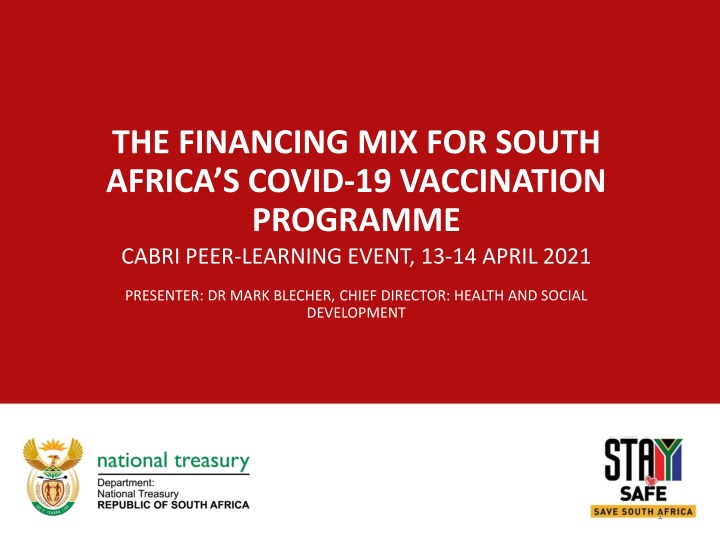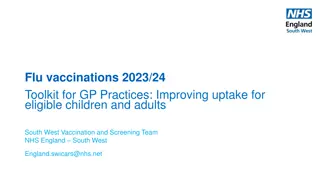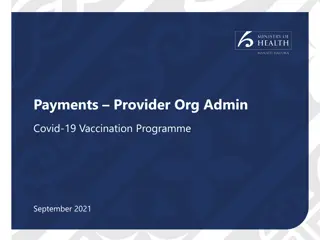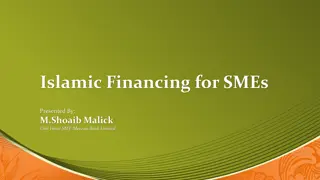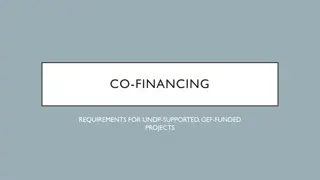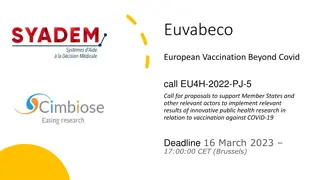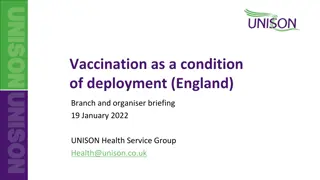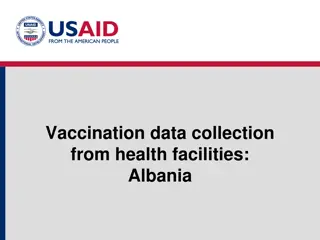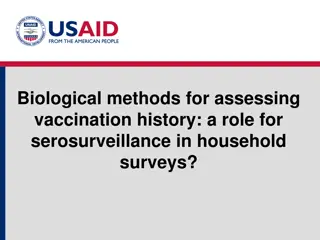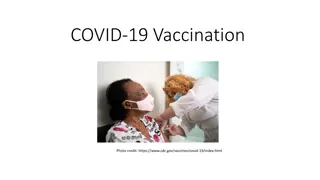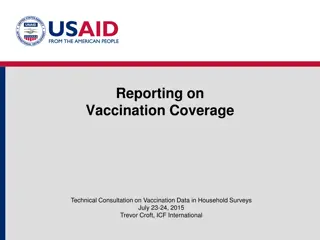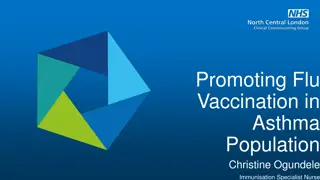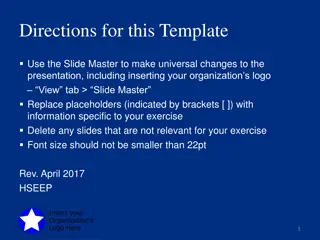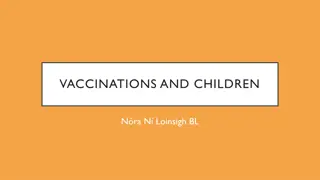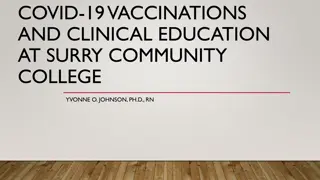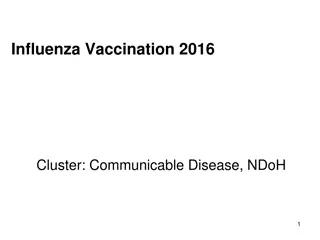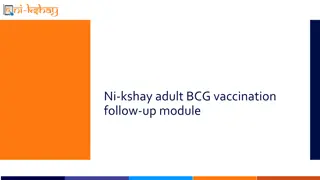Financing Mix for South Africa's COVID-19 Vaccination Programme
The presentation discusses the critical role of vaccines in South Africa's economy, financing options for the vaccination programme, costing challenges, and budget allocations. Explore the strategies and challenges in securing funding for this important initiative.
Download Presentation

Please find below an Image/Link to download the presentation.
The content on the website is provided AS IS for your information and personal use only. It may not be sold, licensed, or shared on other websites without obtaining consent from the author.If you encounter any issues during the download, it is possible that the publisher has removed the file from their server.
You are allowed to download the files provided on this website for personal or commercial use, subject to the condition that they are used lawfully. All files are the property of their respective owners.
The content on the website is provided AS IS for your information and personal use only. It may not be sold, licensed, or shared on other websites without obtaining consent from the author.
E N D
Presentation Transcript
THE FINANCING MIX FOR SOUTH AFRICA S COVID-19 VACCINATION PROGRAMME CABRI PEER-LEARNING EVENT, 13-14 APRIL 2021 PRESENTER: DR MARK BLECHER, CHIEF DIRECTOR: HEALTH AND SOCIAL DEVELOPMENT 1
INTRODUCTION Vaccine seen as most important macro-economic factor in Budget 2021 Financing Costing Interaction with private sector 2
VACCINE MOST IMPORTANT MACRO- ECONOMIC FACTOR IN BUDGET 2021 COVID has caused largest national and global recession in a century GDP dropped by 7% in 2020/21 Revenue declined by around R130 billion per annum for 3-4 years Deficit rose to -12% in 20/21 Has affected whole spending side of budget over R300 billion cuts across all sectors over MTEF Getting workplaces open and economy going critical and vaccination seen as critical intervention 3
FINANCING OPTIONS Public Vaccinations seen as public good and should be free at point of service and predominantly publicly funded Funded through general government revenue and budget reallocations (about R8.2 billion of the total allocation was added to baseline) plus R1.25b in 2020/21 (Emergency allocation) Includes deficit financing Private At the same time, strong willingness from private sector to contribute, and people with medical aid would expect their scheme to cover costs Government procures all vaccines and sells on to private sector No OOP financing Loans Loans from WB still considered, but currently seems unlikely due to fairly extensive requirements, e.g. approval of purchase contracts, plans etc. Donations SA as UMIC not eligible for COVAX AMC mechanism (some purchasing via COVAX but self-funded) Locally established Solidarity Fund contributed early in process and donated upfront COVAX payment 4
COSTING Ministerial Advisory Committee established a costing workstream. COVID vaccination cost-model developed, underwent several iterations. Main difficulty estimating uptake, which is the primary cost driver. Also uncertainty wrt use of additional vs existing staff, price mix of vaccines etc. Model provided several scenarios, e.g.: Full / People vaccinated Scenario incremental cost Uptake Total cost ZAR 1. 100% uptake 2. Realistic 3. Optimistic 4. Low Full Full Full Incremental 100% in all groups Differentiated (30%-70%) 70% in all groups 40% in all groups 40,350,000 17,735,738 29,487,040 16,849,737 19,467,262,668 7,779,132,229 10,489,338,364 4,261,100,797 Depending on scenario, costs ranged from R4.3 bn ($295 m) to R19.5bn ($1.3 bn). Huge variation. The MoH announced that the country s 3-phase vaccine roll-out strategy aims to vaccinate about 67% of the population over 12 months 5
BUDGET ALLOCATIONS At present, R10.25 billion allocated for the vaccination programme R million 2020/21 2021/22 2022/23 2023/24 Total Budget holder Vaccine procurement and distribution Service delivery costs Vaccine research Comminication campaigns Total allocated 1100 4,350 1,500 100 2,100 900 0 0 0 0 0 7,550 National DOH 2,400 Provincial DOHs 250 Medical Research Council 50 Dept of Communication 10,250 0 150 0 0 0 50 1,250 6,000 3,000 Dependent on progress and need 9,000Contingency reserve and emergency allocations Additional potential funding In 2020/21, emergency allocations of R1.25 billion were made for prepayments and initial rollout. In Budget 2021, tabled in February, R9bn was allocated over 2 years, split between National DOH for vaccine procurement, provinces for implementation, MRC for research and GCIS for communication campaigns Provision in contingency reserve for augmenting these amounts, which can be authorised by MoF Some amendments likely based on pace and role of private sector 6
PUBLIC-PRIVATE INTERACTIONS SA has largely divided public and private health system with historically little interplay between the two. A number of interactions / collaboration between public and private sector will be required or beneficial for the vaccine programmes Government is currently sole procurer of vaccines. Will sell these to private healthcare providers, which will in turn claim from medical aids return of some funds to the fiscus Some medical aid patients may get vaccinated at government facilities, and government will claim from medical aids Government contracting private pharmacies to vaccinate public patients These arrangements are partly unchartered territory in SA and require careful planning and consultation. Long-standing plans for a united health system under NHI, with a mixed public and private provision platform. COVID-19 vaccination programme presents opportunity test aspects of this in practice 7
DISCUSSION Lack of price transparency Contract secrecy and extremely unfair clauses require country solidarity and response Uncertain delivery schedules Indemnity arrangements No-fault compensation Fund Assessing safety; national and global regulators Emerging role of private sector Balance between central and decentralised response and expenditure allocation Staffing implications, delivery models eg mass sites, private pharmacies 8
LESSONS LEARNT Public good Budgeting in uncertain environment, requires instruments for flexibility. Currently not budgeting for unrealistic 100% uptake. Ability to augment funding in- year provides comfort if uptake is higher/quicker than anticipated Economic case for vaccines important SA in extremely constrained fiscal situation with large government-wide budget cuts. Importance of vaccines for economic recovery provided strong case for budget. Society-wide mobilisation key Strong willingness of private health sector to contribute (benevolence & enlightened self-interest ) Some private medical schemes even offered to subsidise public sector vaccines Considerable pro-bono support, with private companies seconding staff to assist in planning etc. Contracting arrangements between public and private sectors will hopefully generate lessons for a uniform / integrated health system under NHI 9
CONCLUSION Vaccine is a public health good, essential for re-opening economy so should be mainly publicly financed No OOP rather free to user In our case where had private medical scheme billed back in background Deficit financing Potential loans eg World Bank, IMF, NDB, Afrexim but need to look at terms and admin Donor e.g Solidarity Fund (in our case mainly timing issue) Potential gains for NHI and public-private mix Political economy and fairness of contracts 10
